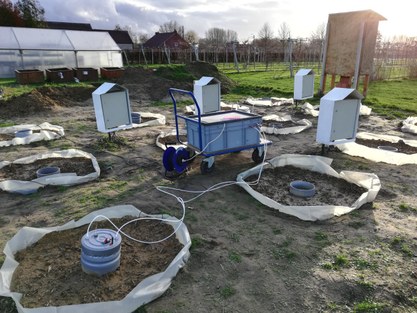Indirect effect of soil texture on exogenous organic matter mineralization through moisture
Soil organic carbon (SOC) plays a vital role in soil fertility and quality, resilience against degradation, and consequently food security. It is widely assumed that SOC levels increase with increasing clay and silt content under similar climatic conditions because of the increased association of SOC to clay minerals and stronger occlusion inside aggregates. Surprisingly, many silt loam cultivated soils in Western Europe instead have low SOC levels compared to lighter textured soils. Soil texture also strongly controls moisture availability, i.e. finer-textured soils have stronger water holding capacity and larger underground water input through capillary rise, and so texture consequently also influences heterotrophic activity indirectly. The end result of direct vs. indirect impacts on SOC decomposition is not very clear. Therefore, this PhD project was launched to specifically study the indirect effects of soil texture on organic matter (OM) mineralization through regulating soil moisture. This project comprises four major parts: (1) a series of tailor-made incubation experiments to test how soil texture particularly impacts OM decomposition indirectly vs. directly; (2) a field experiment with the manipulation of soil texture to investigate how soil texture controls OM mineralization under field conditions; (3) a field experiment using 13C-labeled materials to study to what extent capillary rise supply from groundwater in differently textured can alleviate water stress during dry periods; (4) finally, an incubation experiment coupled with X-ray µCT to explore how soil moisture is distributed at µm-scale and its relationship with OM decomposition.
